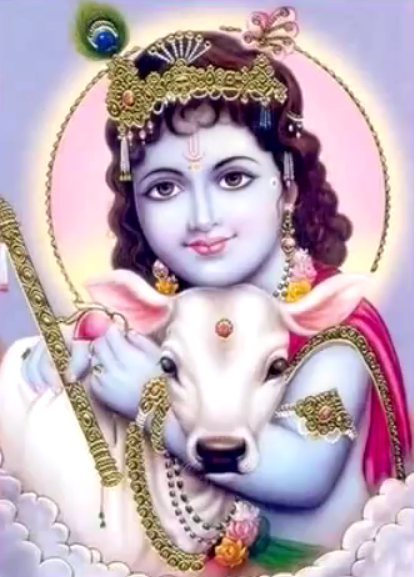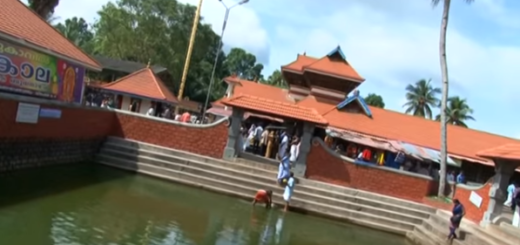Do you know the story behind Oru Neramenkilum song?
“Oru Neramenkilum Kaanaathe Vayyente
Guruvayoorappa Nin Divya Roopam
Oru Maathrayenkilum Kelkkaathe Vayya Nin
Murali Pozhikkunna Ganaalaapam”

Every Malayali is familiar with this devotional song of Guruvayurappa (Lord Krishna), and I doubt if at least one Krishna devotee is present in whole Kerala who has never chanted this devotional song at least once in his life time. Do you know this popular Krishna song is 35 years old and composed by renowned music composer T. S. Radhakrishnan? Its lyrics were written by Chowalloor Krishnankutty and sung by K. J. Yesudas and later included in the popular devotional album Thulasi Theertham in 1986. Over the past 35 years or so, this song has been sung and recorded by many singers. Yet still the original song sung by Yesudas is still popular, the singer who has never got an opportunity to visit the famous Guruvayur temple amidst of many controversies.
Its lyrics were written by Chowalloor Krishnankutty
Its mesmerizing lyrics with deep meaning and intense devotion were written by Chowalloor Krishnankutty, a poet and journalist in the 1970s. Only a few devotional songs have been born in Malayalam with such extremely popular lyrics. Chowalloor has written lyrics of several popular films like Thulavarsham and Ashtabandham way back in the 1970s and 1980s, apart from a few songs in the 1990s. Yet this lyricist is known for the non-filmy song – Oru Neramenkilum. But when it was written, even the lyricist or composer didn’t imagine that it will become extremely popular and will be remembered for ever.
Oru Neramenkilum song originated at Guruvayur
The lyricist believes that this song is a blessing by Lord Guruvayurappan himself. He prefers to believe that Lord himself recited those lyrics to him, and he penned only.
It happened during an annual celebration of Guruvayur temple three and a half decades back. Chowalloor Krishnankutty happened to meet music composer T. S. Radhakrishnan at Guruvayur temple, quite incidentally in front of Lord Krishna inside main temple. T. S was present at Melpattoor Auditorium to present a devotional music concert as a part of temple’s annual festival celebrations. Casually Chowalloor asked Radhakrishnan if he is willing to sing a devotional song written by him. Though it was a joke for Chowalloor, to his surprise Radhakrishnan asked him to bring the song.
As the matter reached a serious knot, Chowalloor took a room at nearby Jayasree lodge and spent a few moments in meditation before he started writing. Pallavi of the song came to his mind like a flash, and he completed the song within one hour. He approached Radhakrishnan with his song, and within moments the composer tuned the song and sang to Chowalloor.
The music composer too believes that tune of Oru Neramenkilum was given by none other than Lord Guruvayurappan himself. In the music concert same night, Radhakrishnan presented the song before the audience, and among all the songs he sang that night, he received most appreciation and clapping for Oru Neramenkilum. Yes, an evergreen devotional song of Krishna was born at Guruvayur temple. May be a destiny. The songwriter later certified that though he wrote more than 3500 devotional songs, it’s this particular song which changed his life and brought him immense success.
Definitely a song with god’s signature, it was tuned in Dwijavanti ragam, a rare ragam in Carnatic music. Later the song was recorded in K. J. Yesudas’ voice for Tharangini cassettes and still heard by millions of Krishna devotees. The cassette was titled Tulasi Theertham by him. The song is equally loved by kids of present generation. A song written, composed and sung for the first time in front of Guruvayurappan is nothing short of Krishna’s blessing. Today is Sree Krishna Jayanti, and in this festival occasion I would like to recite the song once again,
“Oru Neramenkilum Kaanaathe Vayyente
Guruvayoorappa Nin Divya Roopam
Oru Maathrayenkilum Kelkkaathe Vayya Nin
Murali Pozhikkunna Ganaalaapam”.
Read a few more articles on Vishu celebrations associated with Krishna worship of Keralites. Here is the page link. Click on the images in the gallery to read
(Visited 4,744 times, 1 visits today)















Recent Comments